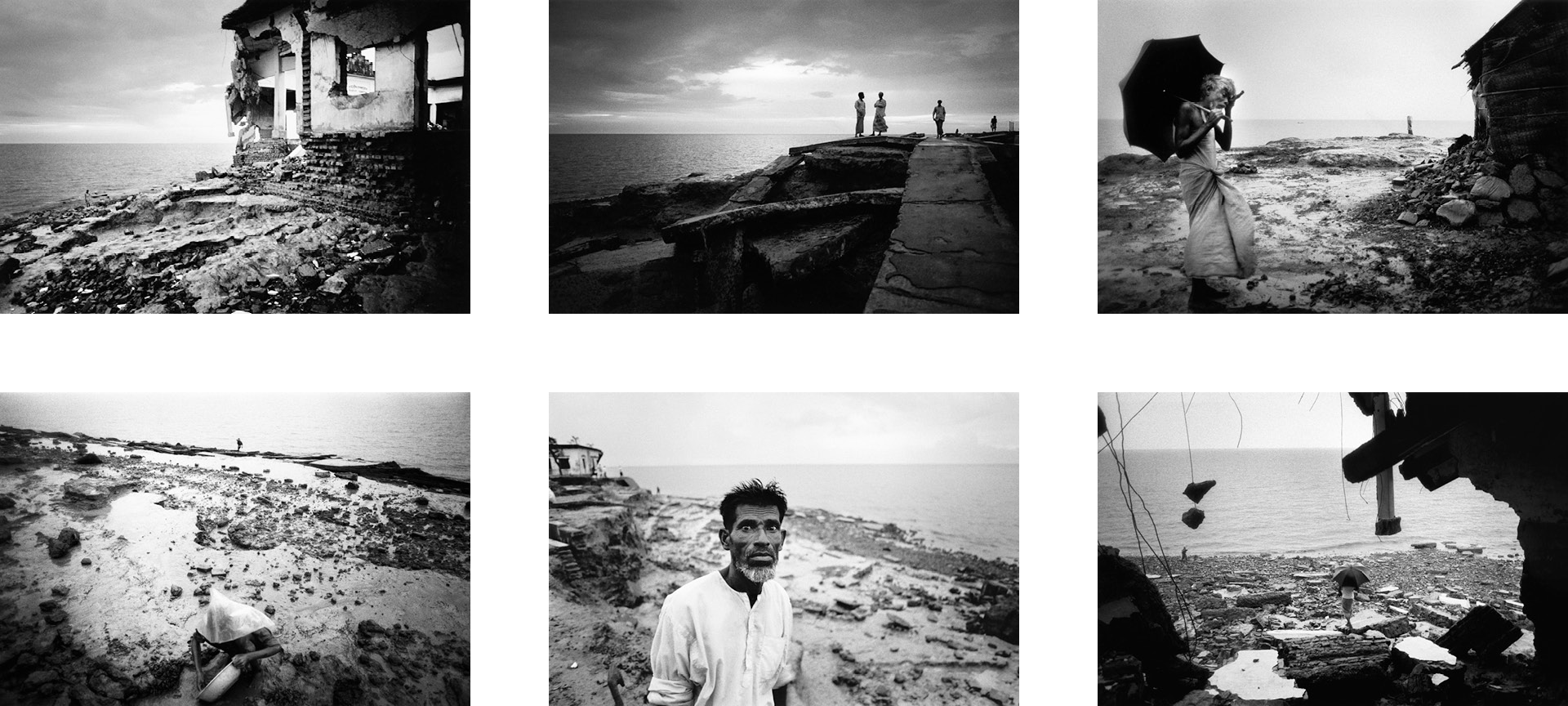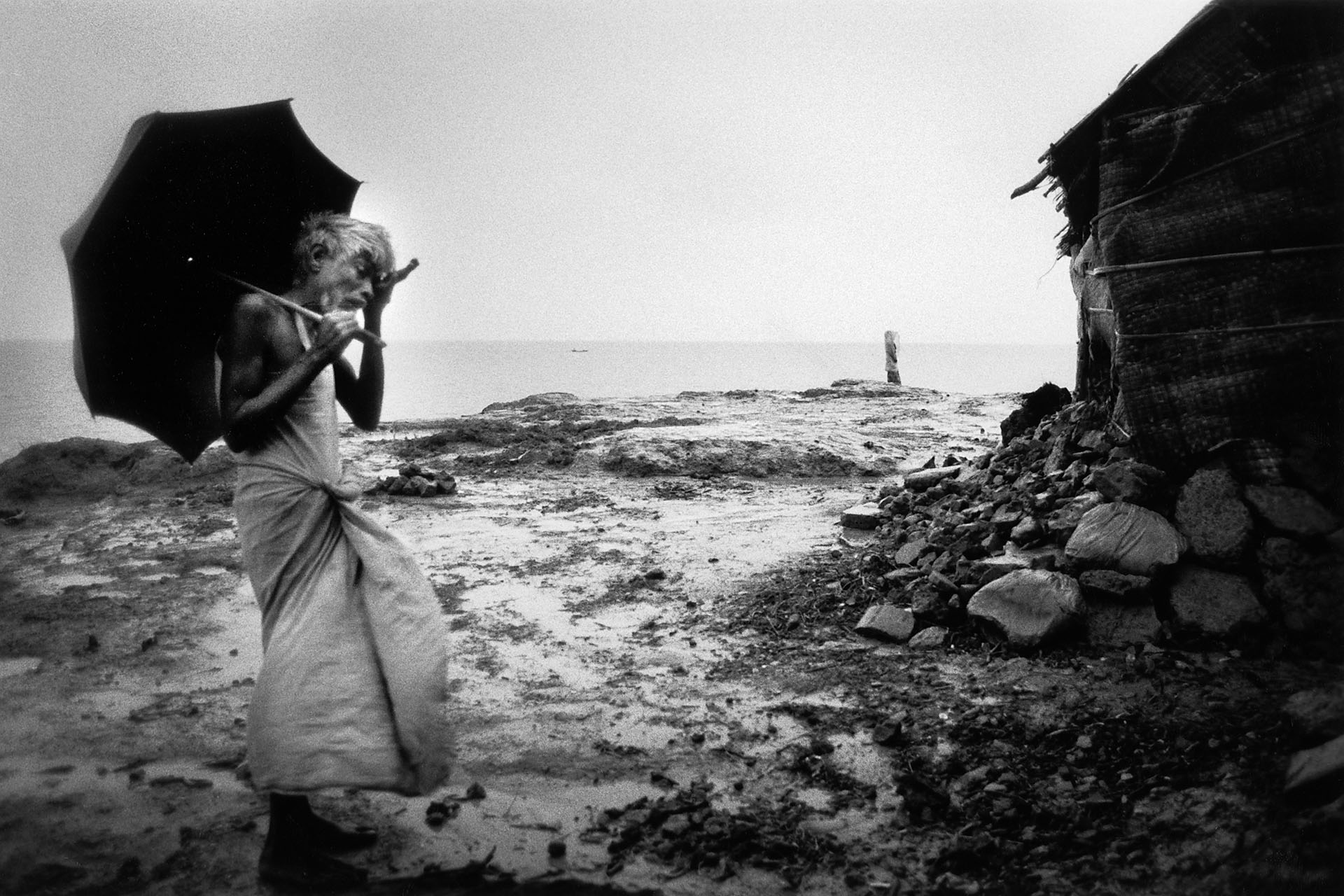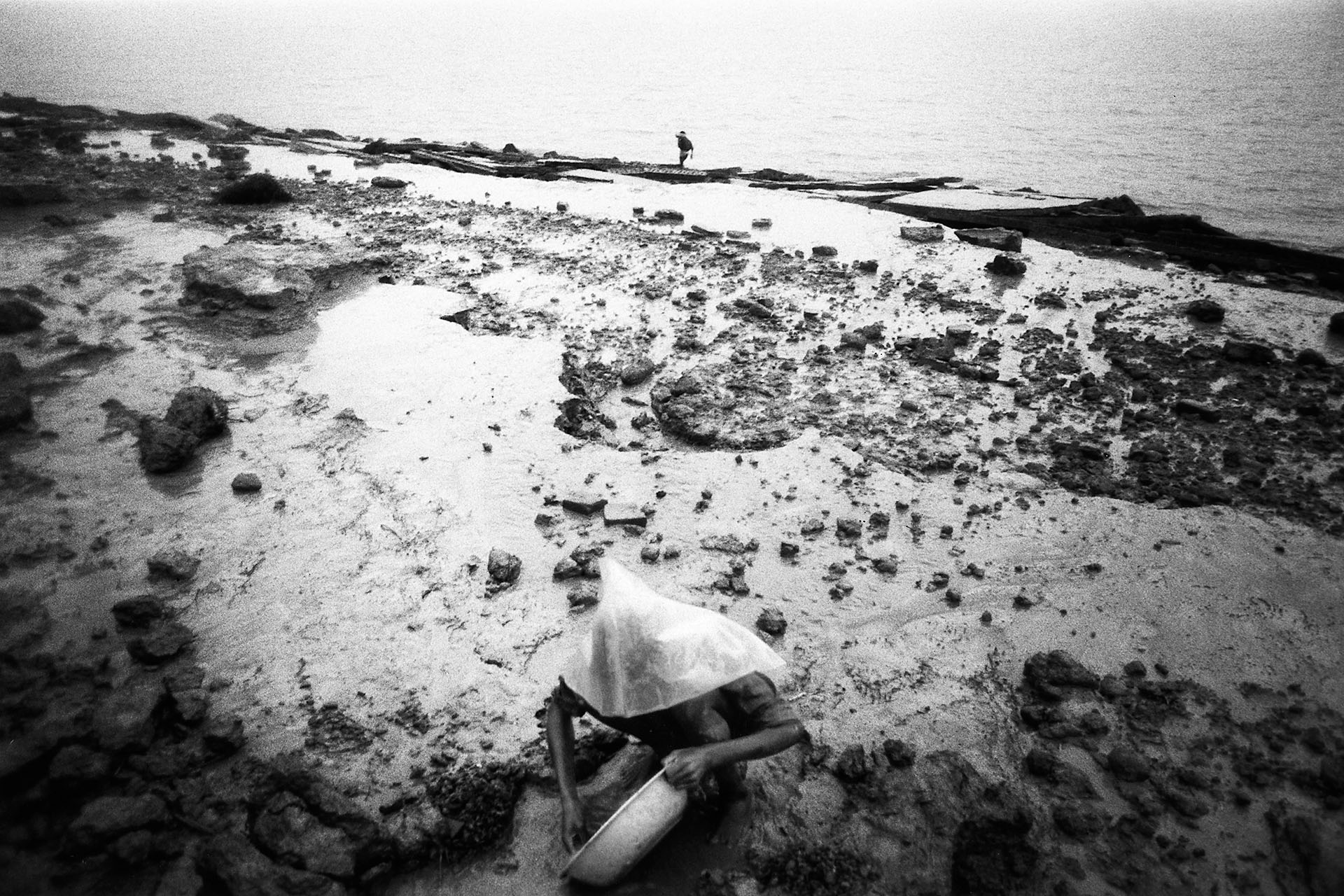1994
Bangladesh – Sandwip: An Island disappears into the Sea
Floods, tornadoes, and cyclones are recurring events in Bangladesh. A more recent danger that is growing in scale is erosion. Due to deforestation in the catchment areas, this silent, insidious disaster is now affecting millions of people settled by the rivers, on the alluvial char islands within them, and along the seashore.
Sandwip is exposed without protection to all these perils. The island is both emerging and disappearing at the same time; no part of it is more than a hundred years old. Southwest sea currents are undermining the island’s base, causing the embankments to collapse. Nothing remains to stop the tidal surges that build up during cyclones in the Bay of Bengal, or the waters of the Meghna that break in from the northwest. This body of water that carries the waters of the Ganges and the Brahmaputra to the sea is the second largest delta in the world. In the east, the island is separated from the coastal region of Chittagong by the Sandwip Channel. Northward-flowing bodies of water from the Bay of Bengal push against the incoming tides of the Meghna. Monsoon storms and a 5.5-meter difference in tide levels make this a particularly dangerous place and the scene of frequent shipwrecks.
Visiting Sandwip in 1567, the Venetian merchant Caesare Frederici described it as the world’s most fertile island. It exported 200 boat loads of salt to the Portuguese port of Chittagong. The island was also a center for shipbuilding, where the Sultan of Constantinople ordered his fleet, and it remained independent even though Chittagong became Portuguese, Dutch, and French – until 1760, when the East India Company took control of the trade in jade, porcelain, and silk from China, Persian fragrances, and spices from Java and Sumatra.
Sandwip Town, once in the middle of the island, is now on its edge. In 1993, the courthouse, post office, and municipal guesthouse disappeared into the sea, to be followed by the telegraph office, the bank, the hospital, and the main street a year later. While the mosque is being gradually washed away, those residents who can afford it move to the mainland or build new homes closer to the center of the island. Those who stay behind live under the constant threat of losing the ground under their makeshift homes as they debris-pan for valuables.
The story was photographed during a reportage commissioned and published by Neue Zürcher Zeitung, Zürich, and became part of Delta. The Perils, Profits and Politics of Water in South and Southeast Asia.
Assignments
- 2010–2018Afghanistan – Glacier Walks in Times of War
- 2012Burma Revisited
- 2009Swat – Mutilated Faces
- 2007Kazakhstan – Oil Great Game in Central Asia
- 2005Turkmenistan – A Journey under Surveillance
- 2004China – Farewell to Kashgar
- 2001–2010Afghanistan – A Thirty Years War
- 2001China – The Transformation of Xinjiang
- 2001Afghanistan – Drought and Famine
- 2000Kashmir – Paradise Lost
- 2000Ulanbataar – Children’s Underworld
- 2000London – Going Southwark
- 1999Indonesia – East Timor: Times of Agony
- 1998–1999Borneo – Destruction Business
- 1998Afghanistan – Economy of Survival
- 1997Cambodia – Quiet Days in Pailin
- 1996Tajikistan – Forbidden Badakshan
- 1995Iran – Roads to Isfahan
- 1994–the presentAngkor – The Mercy of Ruins
- 1994Bangladesh – Sandwip: An Island disappears into the Sea
- 1993Calcutta – Durga Puja
- 1992–1996Indochina – Legacies of War
- 1992Cambodia – Resurrecting a Country
- 1991–1992Burma – Behind the Bamboo Curtain
- 1990Ahmedabad – Cotton Mills
- 1987China – The Pulse of the Earth
- 1978–1980Greece – Lavrion Silver






